Bankruptcy Watch: 10 Retail Stocks at Growing Risk
The COVID-19 pandemic has gouged the retail industry. These 10 retail stocks have either been linked to possible bankruptcy filings or given off other warning signs.


Retailers across the country are working diligently to ensure that their businesses aren't the next victim of the coronavirus. The e-commerce revolution might have brought the industry to its knees, but it seems like COVID-19 is ready to deal the final blow – bankruptcy – to several retail stocks.
On April 24, reports surfaced that Neiman Marcus could be filing for Chapter 11 bankruptcy at any moment. The department store, which reportedly was in talks with lenders to obtain $600 million in emergency funding to ensure it gets through bankruptcy proceeds, was suffering under $4 billion in debt long before the coronavirus exerted its pressure on the industry.
However, not everyone is keen on the department store to file. Mudrick Capital Management LP has gone so far as providing Neiman Marcus with a proposal to supply $700 million in debtor-in-possession financing. However, its funding comes with a stipulation that Neiman Marcus must find a buyer. That's no easy task, given that all 43 of its stores have been closed since March 17, and the retailer has had to furlough more than 14,000 employees. Few buyers want to take on that kind of responsibility.
Neiman Marcus is hardly alone in its struggles.
Here, we look at 10 retail stocks that find themselves in considerable peril thanks to the coronavirus' toll on the industry. In some cases, the companies have already been linked to potential bankruptcy filings. In others, credit ratings agencies have reported serious concerns about these companies' debt. And in still others, their financial positions are signaling danger via an ominous "Altman Z-score," a metric measuring a company's credit strength to determine the likelihood of bankruptcy. (More on how that works in a minute.)
None of this is a guarantee that any of these companies will indeed go bankrupt – lesser companies have been saved from worse, whether it's on their own merits or through plans like the one proposed by Mudrick Capital. However, each of these retail stocks is extremely distressed thanks to the COVID-19 threat and face a heightened risk of bankruptcy or other drastic measures as a result. For that reason, investors should keep their distance.
Data is as of April 27. Altman Z-scores provided by Gurufocus.com.
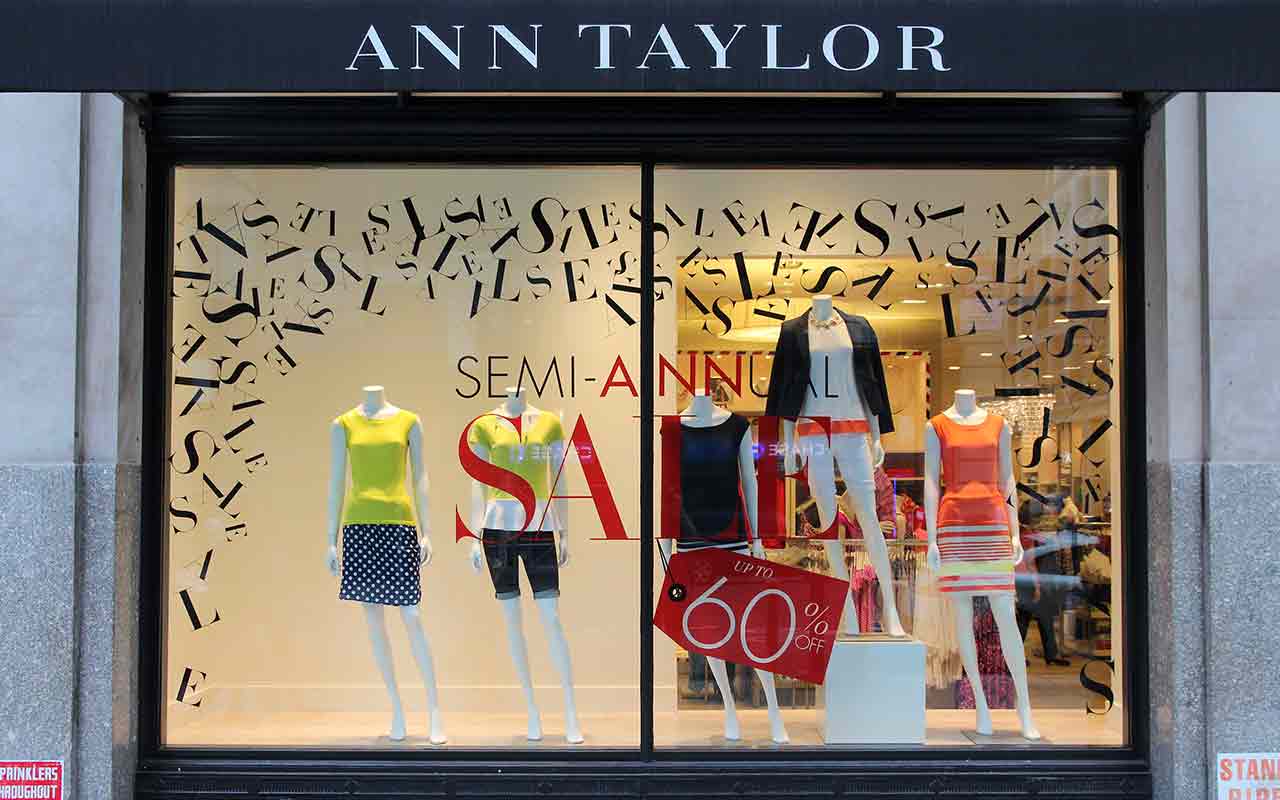
Ascena Retail
- Market value: $13.4 million
- Altman Z-score: 0.58
Ascena Retail (ASNA, $1.50) – the owners of Ann Taylor, LOFT, Lane Bryant, Justice and other retail brands – operates roughly 2,800 stores in the U.S. and Canada.
The once highflying retail conglomerate isn't new to the topic of bankruptcy. In August 2019, reports began to circulate that Ascena's lenders were getting nervous about its outstanding debt, which at the time stood at more than $1.4 billion. ASNA also was said to be meeting with bankruptcy law firms.
Ascena had been battling with landlords over its Dressbarn banner and more than $302 million rent payments. At one point, Fox Business reported, Ascena insinuated it would file for Chapter 11 bankruptcy to skip out on the debt. In February 2020, Ascena completed its wind-down of Dressbarn, resulting in the closure of more than 650 stores and the elimination of the debt.
S&P Global Ratings lowered its debt rating on Ascena from CCC to "selective default" on March 12. They did so after Ascena repurchased $122 million of its 2022 term loan facility below par – a move the ratings' agency considered distressed. On March 16, they raised their rating to CCC-, arguing that the risk of conventional default (which could benefit bondholders by comparison) has increased due to the coronavirus and its high level of debt.
Still, ASNA is hardly in a position of strength. "The negative outlook reflects our view that the company will likely pursue a restructuring in the next six months amid weak operating performance and industry challenges," S&P Global Ratings writes.
Then there's Ascena's low Altman Z-score of 0.58. Altman Z-score is intended to assess a company's financial stability. It takes several financial numbers from a balance sheet and income statement and turns them into a score. Anything above 2.99 means a company is unlikely to face bankruptcy within the next 24 months. Anything below 1.81 means a company is in distress and could go bankrupt within 24 months. And everything in between is a gray zone, albeit one signaling the possibility of financial distress.
Ascena did respond to the original downgrade on March 12, saying it wasn't considering bankruptcy and that it was in full compliance with regard to all of its obligations. Further, ASNA believes it has sufficient liquidity with $600 million in cash and what's available on its revolving credit facility.
Still, this is a company that suffered a $125.8 million operating loss through the first six months of its fiscal year – a period that ended Feb. 1, 2020. And things have almost certainly taken a turn for the worse since then.
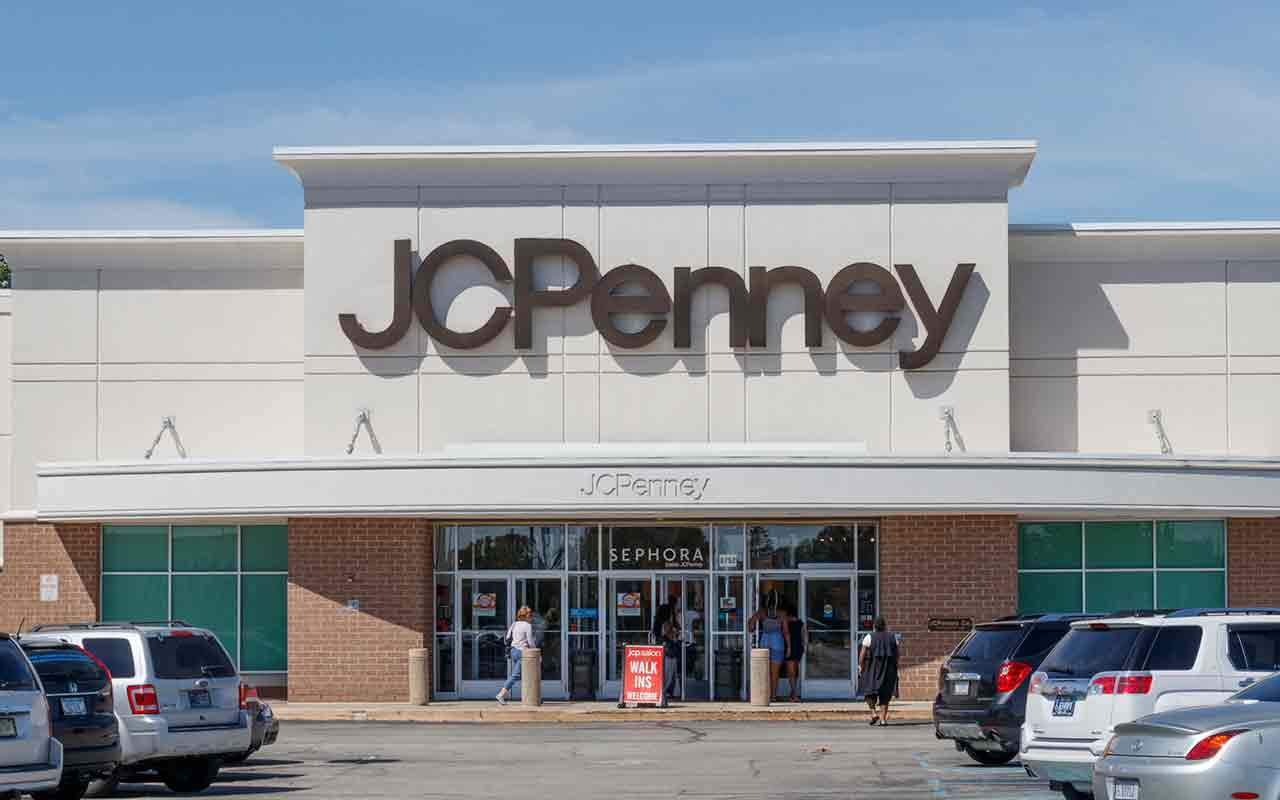
JCPenney
- Market value: $80.7 million
- Altman Z-score: 0.89
A bankruptcy filing by JCPenney (JCP, $0.27), if recent reports are accurate, could be just days from happening.
On April 24, a Wall Street Journal report claimed the retailer is negotiating with its current lenders for a debtor-in-possession loan that would allow it to continue to operate during potential bankruptcy proceedings. The amount of the loan could be up to $1 billion.
JCPenney finished its fiscal year ended January with net debt of $3.33 billion, down considerably from its 2015 net debt of $3.87 billion. However, in that same time, revenues have fallen by 15% to $10.7 billion. It also has lost money on a non-GAAP (generally accepted accounting principles) basis in three of the past four years.
On April 15, JCPenney failed to pay $12 million in interest on its 6.375% senior notes due in 2036. Its lenders gave it a 15-day extension to make the payment. If the company fails to come through, the lenders can force repayment of the $388 million in notes, 16 years before they come due.
Analysts were concerned about JCPenney prior to the coronavirus. Now that unemployment is expected to be higher than normal for months, if not years, it is going to be very difficult for the department store to refinance its debt at reasonable interest rates.
"There's a good chance they can survive, but this is no layup," Customer Growth Partners' Craig Johnson recently told CNN. "This is going to be a three-pointer deep in the corner with time running out."

L Brands
- Market value: $3.2 billion
- Altman Z-score: 1.30
L Brands (LB, $12.21) is a tale of two businesses. You've got the struggling Victoria's Secret brand, which can't seem to do anything right these days. And you've got Bath & Body Works, which can't seem to do anything wrong.
Investors thought the company solved its problems in February by selling 55% of its lingerie business to Sycamore Partners, a private equity firm that also owns Talbots and several other retailers. L Brands received $525 million for giving up majority control. It also would retain 45% of what would become a privately held company under Sycamore management.
Not so fast.
On April 22, L Brands announced that Sycamore sent a notice to the company expressing that it intended to terminate its agreement to buy 55% of Victoria's Secret. It went as far as asking the Chancery Court of Delaware to render the agreement null and void because L Brands closed stores and laid off employees, violating the agreement.
L Brands filed a lawsuit of its own on April 23, arguing that Sycamore's move was nothing more than "buyer's remorse" and an invalid reason for terminating the agreement. L Brands further argues that in recent weeks, Sycamore had tried to lower the acquisition price.
Several analysts believe the store closures by L Brands were necessary and within the company's rights amid the COVID-19 pandemic. However, Alon Kapen, a lawyer with Farrell Fritz, a Long Island law firm, suggested to Retail Dive that LB had an obligation to speak with Sycamore about these closures.
The outcome could determine the future financial health of L Brands. Although it has a market capitalization of more than $3 billion, it currently has a Z-Score of 1.30, putting it well within distressed territory.
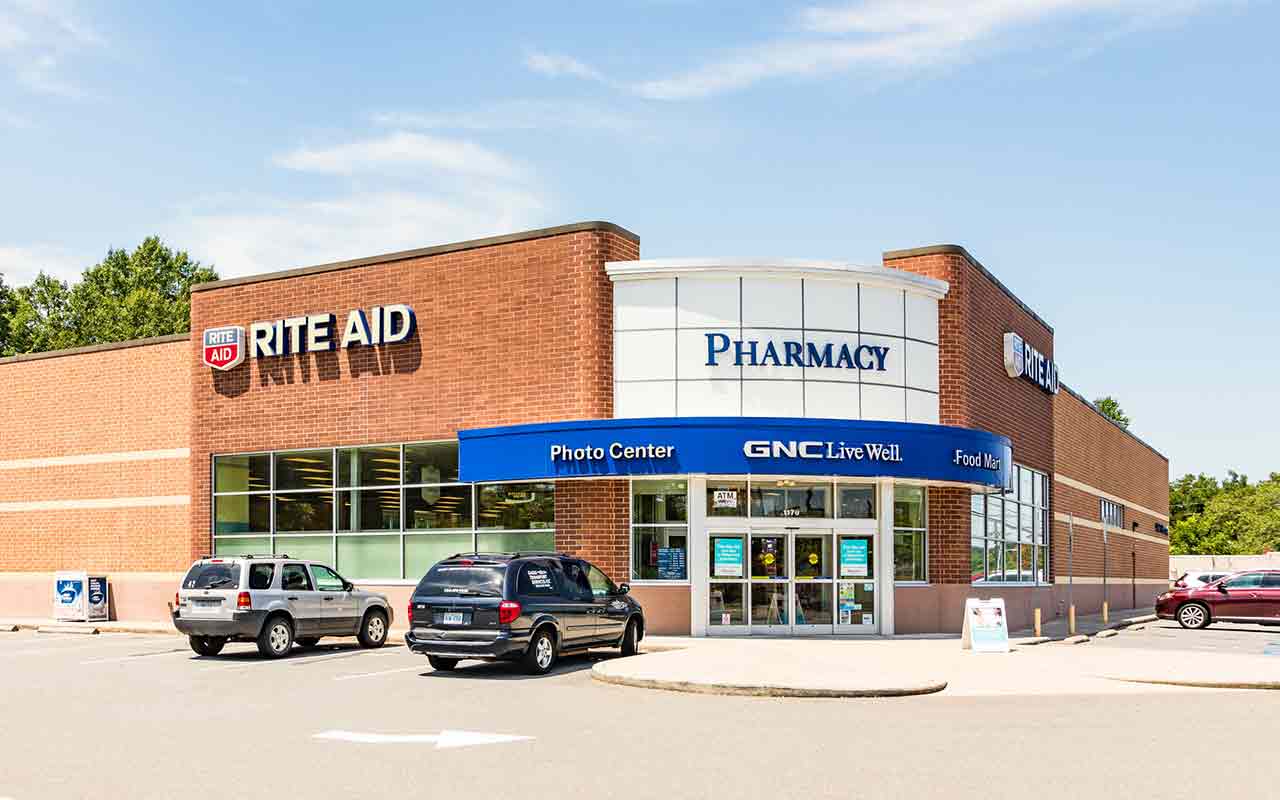
Rite Aid
- Market value: $828.3 million
- Altman Z-score: 1.77
Rite Aid (RAD, $15.65) finished fiscal 2020 (ended Feb. 29) with revenues of $21.9 billion, which was 1.3% higher than a year earlier. The bottom line was even more improved, with a net loss from continuing operations of $469.2 million – 30% thinner than the year-ago loss. On an adjusted basis, Rite Aid made $8 million from its continuing operations in 2020, flipping from a loss of $3.1 million a year ago once certain one-time items were backed out.
Also fortunate for shareholders: Rite Aid's 2,400-plus pharmacies remain open during the coronavirus, ensuring the sales keep rolling in. The company's revenue outlook for fiscal 2021 is expected to be between $22.5 billion and $22.9 billion, with Retail Pharmacy same-store sales growth of 1.5% to 2.5%.
Rite Aid expects to generate adjusted earnings in 2020 of anywhere from a loss of 22 cents to a profit of 19 cents. However, if social distancing continues for an extended period, it could result in significantly lower front-end sales and prescriptions. That would be terrible news for CEO Heyward Donigan, who was brought in by the board in August 2019 to take the company in a different direction.
Donigan's turnaround plan focuses on becoming the dominant mid-market pharmacy benefits manager (PBM), leveraging its more than 6,400 pharmacists to provide customers with whole-health and wellness solutions, and revitalizing Rite Aid's retail and digital experience.
Rite Aid's biggest problem right now is how much time it has to execute on these plans. As of the end of February, RAD had $3.1 billion in long-term debt at an average interest rate of 5.7%. In 2020, it paid out $229.7 million in interest on its debt. That debt load makes it virtually impossible for Rite Aid to make money on a GAAP basis. Several analysts include RAD among their stocks to sell as a result.

Capri Holdings
- Market value: $2.1 billion
- Altman Z-score: 1.80
On April 1, Fitch Ratings downgraded Capri Holdings' (CPRI, $14.74) debt from BBB- to BB+, moving it from investment-grade to junk-bond status. Fitch also said its outlook for Capri is negative.
It seems the owner of higher-end brands such as Michael Kors, Versace and Jimmy Choo is suffering from the coronavirus like most other retailers.
In early February, Capri cut its annual revenue outlook from $5.8 billion to $5.65 billion. Since then, North American retail has struggled as stay-at-home orders filtered through the U.S. and Canada.
Fitch projects a global slowdown in consumer discretionary spending could extend into 2021. As a result, it projects that Capri's revenues could fall by 25% in 2021 to $4.5 billion and another 10% in 2022. The ratings agency does believe Capri has enough liquidity to get it through the coronavirus and decline in consumer discretionary spending.
Capri provided investors with a COVID-19 update on April 6. The retailer said it had $900 million in cash and cash equivalents on its balance sheet as of April 1, and that it had completely drawn down the remaining $300 million of its $1 billion revolving credit facility.
Capri, which expects its stores in North America and Europe to be closed until June 1, has moved to drastically cut expenses. It has reduced director pay; CEO John Idol will forgo his salary for fiscal 2021, which ends March 31. On April 11, Capri furloughed all 7,000 of its retail store employees. CPRI also is reducing its capital expenditures and inventory purchases for the year.
For now, Capri isn't an immediate-term bankruptcy threat. Fitch believes Capri can weather the storm, and indeed it might based on current assumptions. However, if a lack of consumer discretionary spending carries well into 2021, that outlook could change.
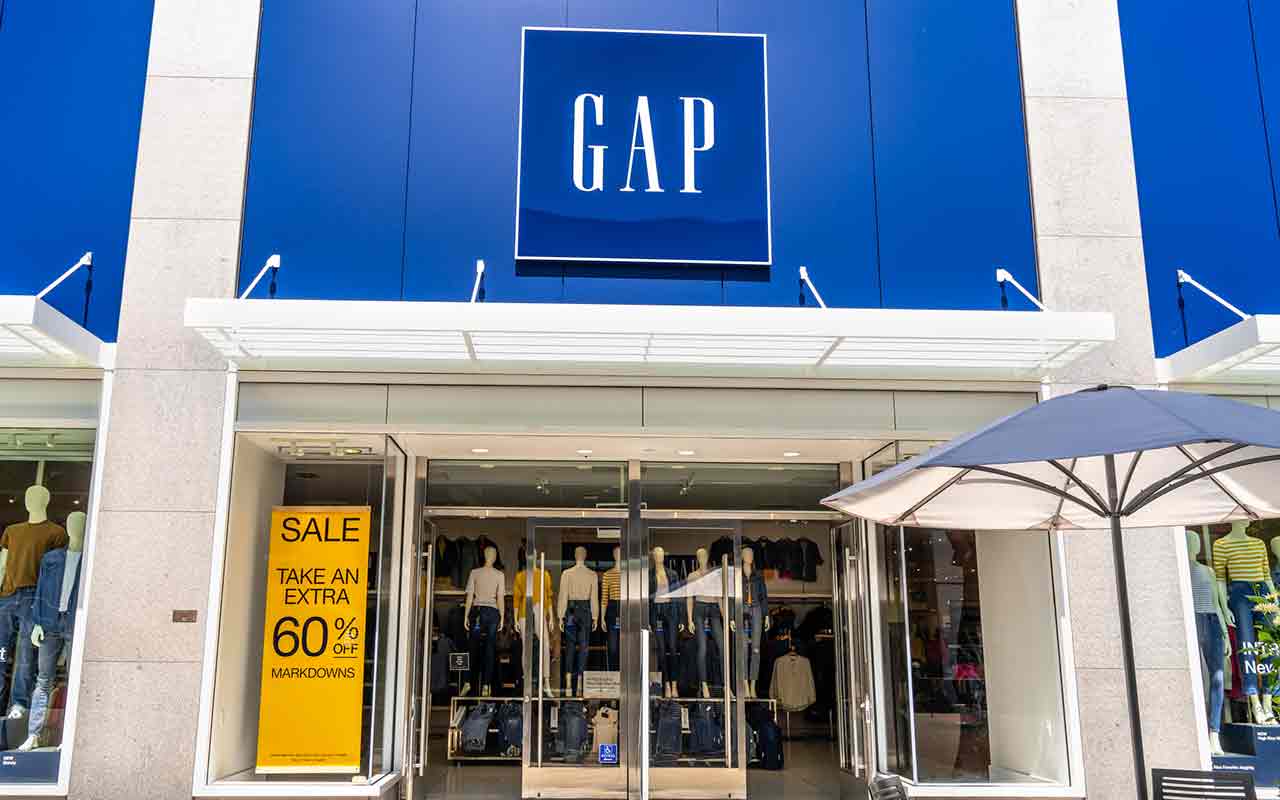
Gap
- Market value: $2.9 billion
- Altman Z-score: 1.96
Gap's (GPS, $8.26) Z-score has yet to fall below the pivotal 1.81 level that would an indicate an imminent bankruptcy. However, the April 23 COVID-19 update it filed with the SEC was hardly reassuring.
Not only did Gap say that its cash and expected cash "may not be sufficient to fund our operations," but the company also reported it had burned through roughly $1 billion in cash since the beginning of February.
The same day, Gap announced the pricing of $2.25 billion in senior secured notes that pay investors between 8.375% and 8.875% and mature between 2023 and 2027. The company will use the proceeds from the sale of junk bonds to refinance notes due in 2021; those notes had a much more reasonable 5.95% interest rate attached.
Gap also said that starting in April, it was suspending monthly rent payments worth $115 million for its stores in North America. It currently is negotiating with landlords to get deferments and reductions in its rent during the coronavirus. It also wants to renegotiate future rents downward or terminate leases where a financial arrangement isn't possible.
The Gap expects to finish the end of its fiscal quarter on May 2 with as little as $750 million in cash despite furloughing approximately 80,000 employees, cutting orders for summer and fall, and drawing down its entire $500 million revolving credit facility at the end of March.
Considering Gap's overall sales were deteriorating before the coronavirus shut non-essential businesses, it's possible that the company's financial condition could result in further drastic measures later in 2020.
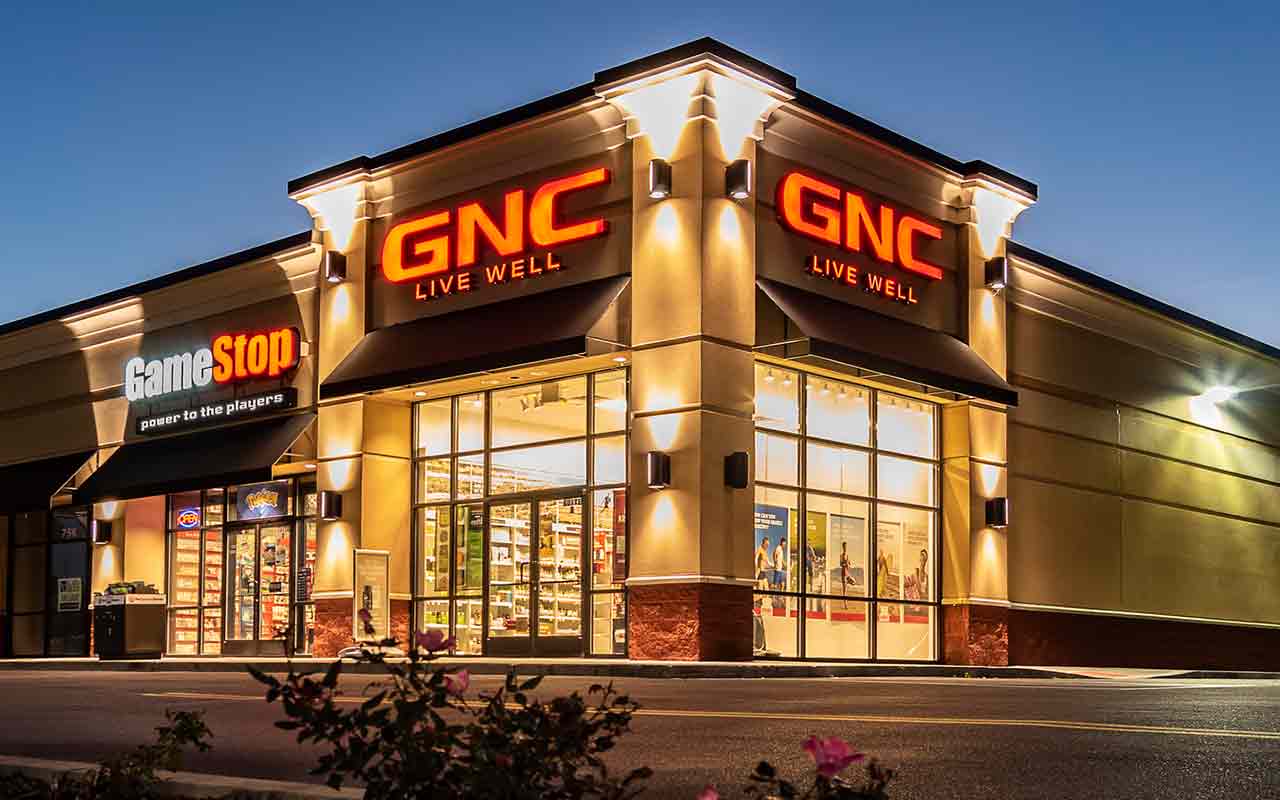
GNC Holdings
- Market value: $62.6 million
- Altman Z-score: 2.00
GNC Holdings (GNC, $0.67) has gone through considerable turmoil in recent years. The coronavirus isn't making things any easier.
In mid-2019, GNC announced that it planned on closing 700 to 900 stores by the end of 2020. Most of the store closures will be mall locations that have suffered from reduced traffic in recent years. Approximately 28% of its retail footprint is in mall-based locations. GNC ended up closing 851 locations in 2019.
In March 2020, the company announced that it didn't expect to generate enough cash from its operations to be able to pay off debt maturing in August 2020 and early in 2021. As a result, S&P Global Ratings lowered the company's debt from CCC+ to CC, well into junk status.
"We believe conditions for GNC are deteriorating substantially due to the coronavirus pandemic, the anticipated macroeconomic downturn, and the limited access to capital markets," S&P Global Ratings analyst Khaled Lahlo said in a press release.
GNC reported its fourth-quarter and fiscal 2019 results on March 24. Sales fell 12% to $2.1 billion, while adjusted income for the year increased by 38%, to $40.0 million. One of the few bright points was GNC's e-commerce business, which accounted for 8.8% of its overall sales – 90 basis points higher than in 2018. (A basis point is one one-hundredth of a percentage point.) In the fourth quarter, e-commerce revenues accounted for 11.5% of sales in the U.S. and Canada, 220 basis points higher than a year earlier. Overall, in terms of actual dollars, however, e-commerce sales actually fell 2.1% in 2019 to $182.0 million.
GNC shares have lost 73% of their value year-to-date. A continued downturn and a model still heavily reliant on brick-and-mortar sales could continue to wear on the health retailer.
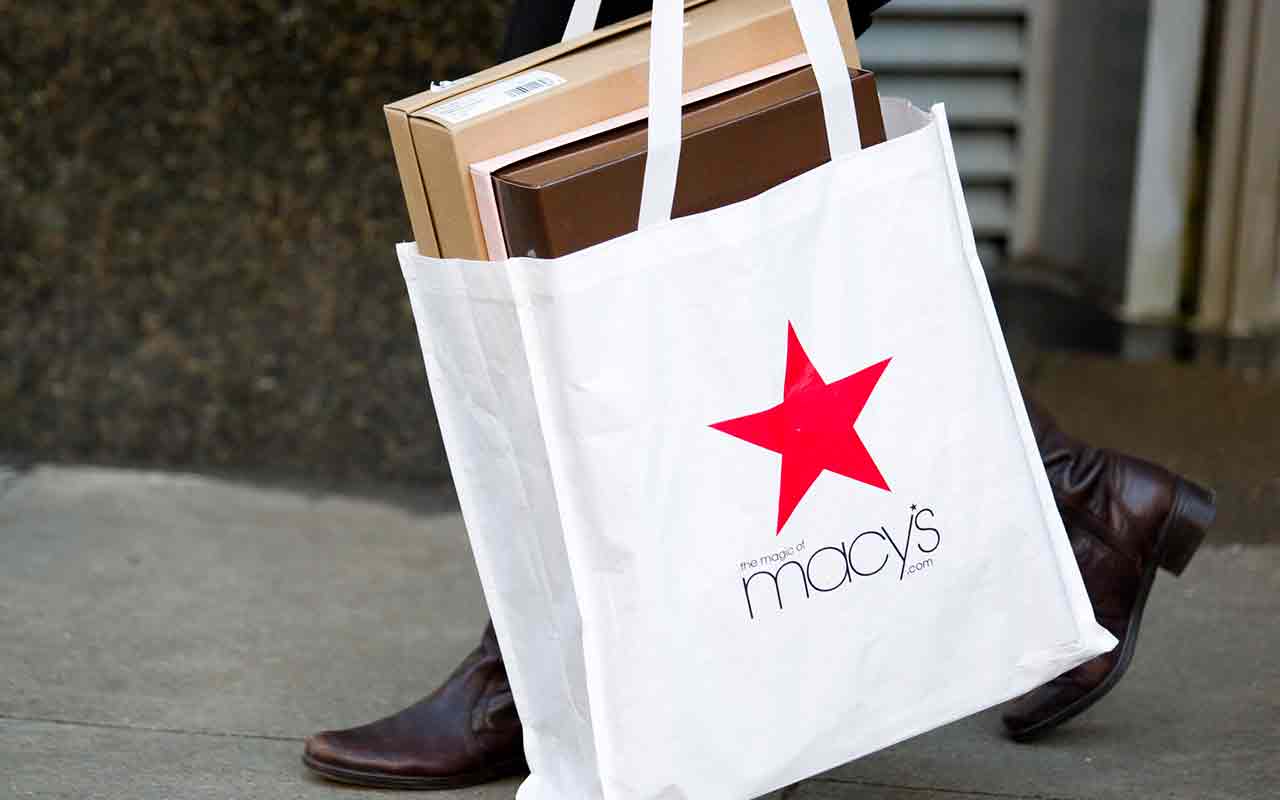
Macy's
- Market value: $1.7 billion
- Altman Z-score: 2.00
When Macy's (M, $6.08) CEO Terry Lundgren stepped down at the end of March 2017, the retailer had just completed a fiscal year in which it generated $25.8 billion in sales and $1.3 billion in operating profits. That wasn't anything near the company's 2014 fiscal year ($2.8 billion in operating profits on $28.1 billion in sales), but it was still very positive.
Macy's finished its most recent fiscal year with net sales of $24.6 billion and operating income of just $970 million. The decline is discouraging, but what's really giving shareholders a hard time is speculation that the coronavirus could see Macy's go broke.
On April 18, Cowen analysts estimated that Macy's has only four months of cash left. On April 21, CNBC, citing people familiar with the matter, reported that the department store was looking to raise as much as $5 billion in debt to ward off bankruptcy as a result of COVID-19.
Should the crisis carry on into the fall, it's quite possible that the department store would be forced to file for bankruptcy to ensure its stores could remain open. That could give Macy's time to sell off real estate and possibly its Bluemercury luxury skin-care brand to pay down its growing level of debt.
Macy's had $3.45 billion in net debt at the end of January. The addition of $5 billion in cash would give it more time. But if its business continues to deteriorate, Macy's Z-score, which indicates whether it might go bankrupt in the next two years, surely would move much lower.

Children's Place
- Market value: $386.4 million
- Altman Z-score: 2.08
Children's specialty apparel retailer Children's Place (PLCE, $29.08) looks like it's in a wounded but at least survivable position with a Z-score of 2.08. Still, the risks here are noteworthy.
Children's Place finished its fourth quarter and fiscal year ended Feb. 1 with $68 million in cash and no long-term debt. However, PLCE did have $122 million in current lease liabilities and $312 million in long-term lease liabilities. With the Gap suspending rent payments, it's clear retailers of all sizes are having a problem meeting the monthly commitment.
In addition, Children's Place has $171 million undrawn of its $350 million revolving credit facility. Plus, it plans to execute the accordion option on its revolver to access another $50 million in cash.
While $289 million might seem like a lot of cash to fight the economic downturn caused by the coronavirus, the company said approximately 65% of the retailer's sales between February and April were expected to be in-store revenue. Of that, March and April normally account for the lion's share of Q1 sales. Based on the assumption above, as well as PLCE's $412 million in Q1 2019 revenue, it will be lucky to generate 60% of last year's results.
Add in that many consumers either won't want to venture out into physical retail spaces, while others won't have the money because of job losses, at least in May and quite possibly June, and the company's second quarter could be a lost cause as well.
Bankruptcy is a long shot here, but possible nonetheless. More to the point for investors, PLCE still faces additional downside risk should the economy's "re-opening" produce less brisk results than hoped.
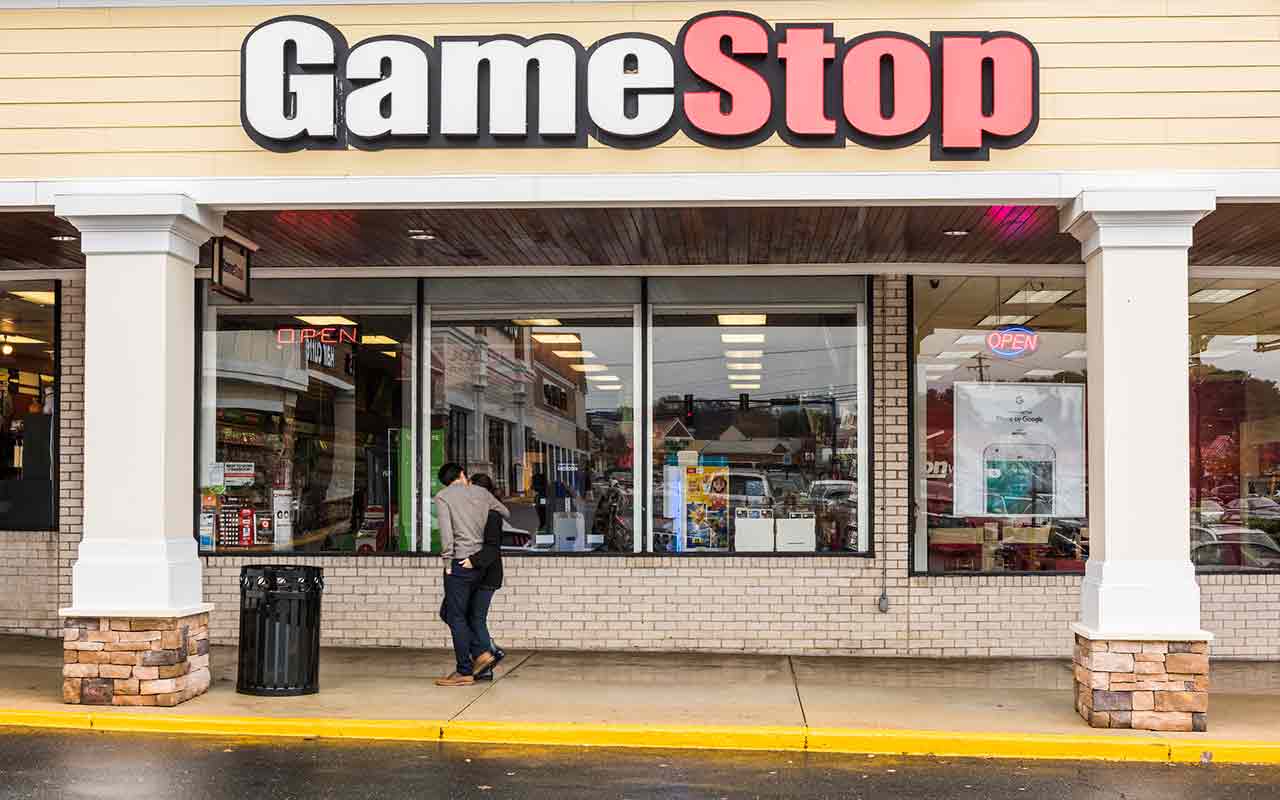
GameStop
- Market value: $375.1 million
- Altman Z-score: 2.45
Most retailers are busy fighting COVID-19. On that front, GameStop (GME, $5.67) is no different. However, it has the added issue of dealing with activist investor Hestia Capital, which owns 7.2% of the world's largest video game retailer.
On April 27, Hestia Capital sent a letter to shareholders outlining some of the changes it would like to see the company enact as part of delivering value for shareholders. A big concern: Most of the directors come from traditional retail backgrounds and don't have the tech savvy necessary for GameStop to be successful.
"The Board remains too retail-focused and continues to unsuccessfully apply traditional retail strategies to address the Company's problems. These efforts have failed for the past 5+ years because the gaming industry has evolved to become more community-based and digitally oriented," the letter to shareholders stated. "Trying to apply traditional retail strategies to compete with Amazon, Wal-Mart, Best Buy, and others is doomed to fail."
One of the activist's points in its letter to shareholders addresses the company's long-term liquidity. Specifically, it has $420 million in 6.75% senior notes due in March 2021 – notes that Moody's has well down the junk ladder at Caa2. In 2019, GameStop repurchased almost $54 million of these notes at prices between 99.6% and 101.5% of par value.
Hestia Capital believes that given the notes have been trading at 69 cents on the dollar, now is the time to pay down its debt.
GameStop recently issued a COVID-19 update saying it had $772 million in cash available to it as of April 4, which means it has net cash (so, factoring in debt) of approximately $352 million. It's not an imminent threat to go bankrupt tomorrow.
However, given that one-third of GameStop's stores in the U.S. remain closed and two-thirds available for curbside pickup only, it wouldn't be prudent to pay down debt at this stage of the reopening process. And given that the company's top and bottom lines have withered for years amid video gaming's aggressive push to digital sales, bankruptcy still is a longer-term possibility if GameStop can't figure out an effective turnaround plan.
Profit and prosper with the best of Kiplinger's advice on investing, taxes, retirement, personal finance and much more. Delivered daily. Enter your email in the box and click Sign Me Up.

Will has written professionally for investment and finance publications in both the U.S. and Canada since 2004. A native of Toronto, Canada, his sole objective is to help people become better and more informed investors. Fascinated by how companies make money, he's a keen student of business history. Married and now living in Halifax, Nova Scotia, he's also got an interest in equity and debt crowdfunding.
-
 What You Learn Becoming Your Mother's Financial Caregiver
What You Learn Becoming Your Mother's Financial CaregiverWriter and certified financial planner Beth Pinsker talks to Kiplinger about caring for her mother and her new book.
-
 I want to help pay for my grandkids' college. Should I make a lump-sum 529 plan contribution or spread funds out evenly through the years?
I want to help pay for my grandkids' college. Should I make a lump-sum 529 plan contribution or spread funds out evenly through the years?We asked a college savings professional and a financial planning expert for their advice.
-
 What to Do With Your Tax Refund: 6 Ways to Bring Growth
What to Do With Your Tax Refund: 6 Ways to Bring GrowthUse your 2024 tax refund to boost short-term or long-term financial goals by putting it in one of these six places.
-
 What Does Medicare Not Cover? Eight Things You Should Know
What Does Medicare Not Cover? Eight Things You Should KnowMedicare Part A and Part B leave gaps in your healthcare coverage. But Medicare Advantage has problems, too.
-
 15 Reasons You'll Regret an RV in Retirement
15 Reasons You'll Regret an RV in RetirementMaking Your Money Last Here's why you might regret an RV in retirement. RV-savvy retirees talk about the downsides of spending retirement in a motorhome, travel trailer, fifth wheel, or other recreational vehicle.
-
 The 24 Cheapest Places To Retire in the US
The 24 Cheapest Places To Retire in the USWhen you're trying to balance a fixed income with an enjoyable retirement, cost of living is a crucial factor to consider. Is your state the best?
-
 The Six Best Places to Retire in New England
The Six Best Places to Retire in New Englandplaces to live Thinking about a move to New England for retirement? Here are the best places to land for quality of life, affordability and other criteria.
-
 The 10 Cheapest Countries to Visit
The 10 Cheapest Countries to VisitWe find the 10 cheapest countries to visit around the world. Forget inflation and set your sights on your next vacation.
-
 15 Ways to Prepare Your Home for Winter
15 Ways to Prepare Your Home for Winterhome There are many ways to prepare your home for winter, which will help keep you safe and warm and save on housing and utility costs.
-
 Six Steps to Get Lower Car Insurance Rates
Six Steps to Get Lower Car Insurance Ratesinsurance Shopping around for auto insurance may not be your idea of fun, but comparing prices for a new policy every few years — or even more often — can pay off big.
